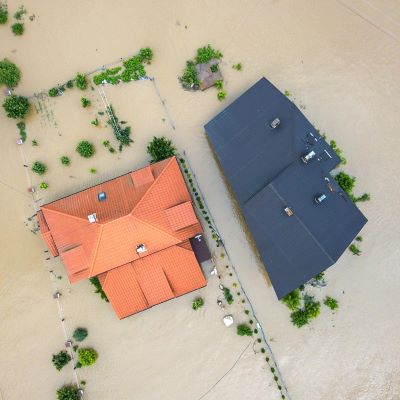As a new year begins, the country looks in the rearview mirror at the unprecedented challenges posed by natural disasters in 2023. The NOAA reported it as a record-breaking year for the United States with 25 separate weather disasters each exceeding $1 billion in losses. From devastating hurricanes and wildfires to severe storms and floods, communities are grappling with the increasing frequency and intensity of these events. Let’s delve into the biggest disaster trends of 2023 and see how we can enter the new year better informed and prepared.
A Year in Review
- Rising Frequency of Extreme, Unexpected Weather Events
One of the most notable trends in 2023 is the escalating frequency of extreme weather events. Climate change has resulted in more intense hurricanes and cyclones, leaving coastal areas particularly vulnerable to powerful storms and widespread damage. Changing weather patterns have also introduced new threats to regions, like the first-ever tropical storm watch issued for Southern California in August.
- Keeping Watch on Wildfires
Wildfires have continued to ravage communities across the country, such as the devastating wildfires on Hawaii’s Maui Island this past summer. While typically affected states in the West experienced a quieter fire season this year as a result of record amounts of snow and rain, experiences over the past several years have shown how unpredictable and severe these events can be. The severity of next year’s fire season will be determined by the amount of winter precipitation, and the spring and summer temperatures.
- Floods: A Persistent Menace
Changing precipitation patterns, melting ice caps and urban development has exacerbated the risk of floods and hurricane storm surge and their impact on both coastal and inland regions. According to the NOAA, the annual frequency of high tide flooding in the U.S. has doubled since 2000 as sea levels continue to rise. Individuals in at-risk areas can enhance their home’s resilience by taking precautionary measures (i.e., fortifying the foundation to avoid seepage and making sure floor drains are clear of any obstructions).
Looking Ahead
What happened in the past can serve as insights to strengthen our preparedness for the year ahead. For the first few months of 2024, the country should watch for the return of El Nino in the winter, driving warmer temperatures in the North and wetter-than-average conditions in the South. While heavy precipitation is forecasted to improve drought conditions in the southern states, drier conditions in the West are likely to persist.
As we navigate the complex and evolving landscape of disasters in 2024, one thing remains clear: securing your home and finances against natural disasters is not just a wise investment but a necessity. Staying informed, strengthening your emergency savings, and investing in supplemental disaster insurance can be the key to helping you and your family recover and rebuild more quickly in the aftermath of catastrophic events. Recoop is committed to equipping you with the knowledge and coverage to help you face the challenges of an uncertain future with confidence. Together, we can weather the storms and emerge stronger on the other side.

